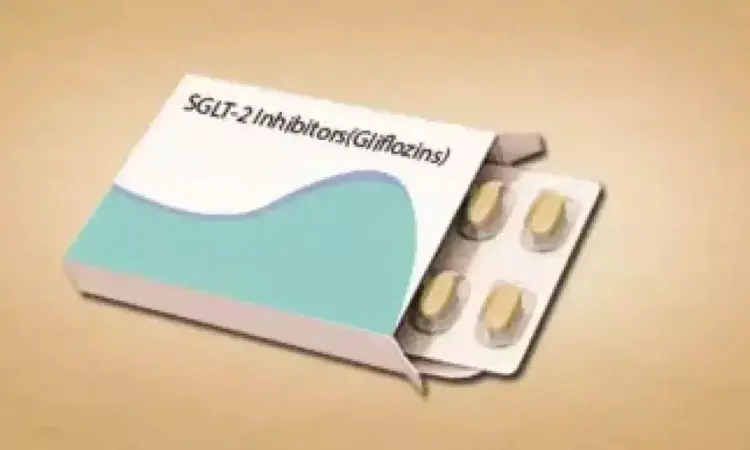- Home
- Medical news & Guidelines
- Anesthesiology
- Cardiology and CTVS
- Critical Care
- Dentistry
- Dermatology
- Diabetes and Endocrinology
- ENT
- Gastroenterology
- Medicine
- Nephrology
- Neurology
- Obstretics-Gynaecology
- Oncology
- Ophthalmology
- Orthopaedics
- Pediatrics-Neonatology
- Psychiatry
- Pulmonology
- Radiology
- Surgery
- Urology
- Laboratory Medicine
- Diet
- Nursing
- Paramedical
- Physiotherapy
- Health news
- Fact Check
- Bone Health Fact Check
- Brain Health Fact Check
- Cancer Related Fact Check
- Child Care Fact Check
- Dental and oral health fact check
- Diabetes and metabolic health fact check
- Diet and Nutrition Fact Check
- Eye and ENT Care Fact Check
- Fitness fact check
- Gut health fact check
- Heart health fact check
- Kidney health fact check
- Medical education fact check
- Men's health fact check
- Respiratory fact check
- Skin and hair care fact check
- Vaccine and Immunization fact check
- Women's health fact check
- AYUSH
- State News
- Andaman and Nicobar Islands
- Andhra Pradesh
- Arunachal Pradesh
- Assam
- Bihar
- Chandigarh
- Chattisgarh
- Dadra and Nagar Haveli
- Daman and Diu
- Delhi
- Goa
- Gujarat
- Haryana
- Himachal Pradesh
- Jammu & Kashmir
- Jharkhand
- Karnataka
- Kerala
- Ladakh
- Lakshadweep
- Madhya Pradesh
- Maharashtra
- Manipur
- Meghalaya
- Mizoram
- Nagaland
- Odisha
- Puducherry
- Punjab
- Rajasthan
- Sikkim
- Tamil Nadu
- Telangana
- Tripura
- Uttar Pradesh
- Uttrakhand
- West Bengal
- Medical Education
- Industry
SGLT-2 inhibitors reduce adverse CV outcomes related to intra-stent restenosis in patients with type 2 diabetes

Italy: Treatment with SGLT2 inhibitors in patients with type 2 diabetes mellitus (T2DM) is linked with a reduced risk of intra-stent restenosis (ISR)-related events, researchers state in a recent study published in BMC Medicine. The benefit of SGLT2 inhibitors extends beyond their blood-sugar-lowering properties.
The findings imply that sodium/glucose cotransporter 2 inhibitors (SGLT2i) are clinically beneficial in T2DM patients with acute myocardial infarction (AMI) while undergoing percutaneous coronary intervention (PCI). Patients not treated with SGLT2i versus SGLT2i users experienced higher intra-stent restenosis.
The stent patency at 1-year follow-up in event-free patients was also found to be high among the users of SGLT2i versus non-users. The benefits of SGLT2i were independent of their glycemic effect.
In clinical practice, restenosis is an increasingly important issue, defined as re-narrowing an arterial lumen after corrective vascular intervention like PCI and coronary artery bypass graft (CABG) surgery. There has been a rise in stent placements to over 3 million annually worldwide, so revascularization procedures have become much more common.
Various clinical trials have shown that SGLT2i improves cardiovascular outcomes in diabetics, non-diabetics and atherosclerosis progression. Type 2 diabetes patients have an increased late lumen diameter loss rate and an increased ISR incidence, with T2DM being an independent predictor of recurrent restenosis. Still, no data is available investigating the effects of SGLT2i on intra-stent restenosis in AMI patients treated with revascularization and the association with glycemic status.
Against the above background, Raffaele Marfella and colleagues from Italy aimed to evaluate whether SGLT2i therapy is associated with lower ISR-related events rates independent of glycemic control in T2DM patients with AMI.
For this purpose, 377 patients with T2DM and AMI undergoing PCI were included. 177 T2DM patients were treated with SGLT2 inhibitors before PCI. MACE (major adverse cardiovascular events) is defined as re-infarction, cardiac death, and heart failure related to ISR (primary outcome). Coronary CT-angiography assessed minimal lumen area and minimal lumen diameter in patients without ISR at 1-year follow-up.
The study revealed the following findings:
· In SGLT2i-treated patients and never SGLT2i-users, glycemic control was similar.
· The incidence of ISR-related MACE was greater in never SGLT2i-users versus SGLT2i-treated patients, an effect independent of glycemic status (HR = 0.418) and also observed in the subgroup of patients having HbA1c < 7% (HR = 0.393).
· The stent patency was greater in patients treated with SGLT2i at 1-year follow-up compared with never SGLT2i-users, in patients without the event.
"Our findings showed that SGLT2 inhibitors use associated with a reduced incidence of MACE related to ISR in diabetes patients," the researchers wrote. "The SGLT2i protective effects extend beyond their glucose-lowering properties, indicating their potential use in more patients."
Reference:
Marfella, R., Sardu, C., D'Onofrio, N. et al. SGLT-2 inhibitors and in-stent restenosis-related events after acute myocardial infarction: an observational study in patients with type 2 diabetes. BMC Med 21, 71 (2023). https://doi.org/10.1186/s12916-023-02781-2
Dr Kamal Kant Kohli-MBBS, DTCD- a chest specialist with more than 30 years of practice and a flair for writing clinical articles, Dr Kamal Kant Kohli joined Medical Dialogues as a Chief Editor of Medical News. Besides writing articles, as an editor, he proofreads and verifies all the medical content published on Medical Dialogues including those coming from journals, studies,medical conferences,guidelines etc. Email: drkohli@medicaldialogues.in. Contact no. 011-43720751


